Tumbling Your Jewelry
When asked to write this article, I had to stop and really think on it. First off, because I don't use a tumbler to clean my jewelry nor as a method for hardening the wire. Why would I? After all, I am working with half-hard wire to start with so it is hardening as I work it and the other idea, well, the thought of putting finished settings into a tumbler gives me the shivers. And, most importantly, in all the years I have taken classes and worked with Dale, she has never suggested using a tumbler of any kind to clean jewelry items. Notice please, I said a tumbler as opposed to using a Speed Brite ionic cleaner.
With this in mind I began doing some research on the subject, reading what others had posted, and talking with several jewelry artists I know who do use a tumbler regarding their reasons why and the methods they use to achieve success with a tumbler. It seems that some people believe that this is the proper way to complete their jewelry items, while others do so for the benefits the tumbler offers them. It is a case of polishing the finished piece as well as work hardening the wire and removing any nicks or burrs that may be present.
So, with that said, let's get down to the basics:
With this in mind I began doing some research on the subject, reading what others had posted, and talking with several jewelry artists I know who do use a tumbler regarding their reasons why and the methods they use to achieve success with a tumbler. It seems that some people believe that this is the proper way to complete their jewelry items, while others do so for the benefits the tumbler offers them. It is a case of polishing the finished piece as well as work hardening the wire and removing any nicks or burrs that may be present.
So, with that said, let's get down to the basics:
There are two types of tumblers available: a rotating tumbler and a vibratory tumbler. They each serve a basic need for anyone working with rough stones that want to achieve a more finished product for use in their jewelry creations.
Rotating Tumbler
With a rotating tumbler, you have a rubber drum or barrel that is filled with different levels of polishing medium, water and the stones that you want to "tumble". In this case, the rocks continuously fall over each other, polishing slowly, much in the same way tumbling waves from the ocean polish sea glass and stones. And, like the action of the waves, it takes a lot of time to polish stones from the rough to a highly polished stage. It is not unusual to take two weeks to a month or more to tumble a batch of stones to the desired finish.
The advantage of using a rotating tumbler is the fact that it will reshape natural rough material, reducing and rounding any angular points on the material.

Vibrating Tumbler
The vibrating tumblers don't actually "tumble" but rather they agitate side to side at a high rate, creating a moving action that carries the polish over and between the stones in it. Mostly used 'dry', the bowl or hopper vibrates rapidly and this action produces a lot of friction between the vibrating rock particles - this is why a vibrating tumbler works quickly.
The rocks do not "tumble" in the hopper, but a circulating action develops that continuously moves the rocks from the bottom of the bowl up to the surface, along the outside edges of the bowl and then back down to the bottom. The tumbling action of a rotary tumbler that rounds and reshapes the rocks is not produced. Therefore, in the lapidary world, a vibratory tumbler is best used to polish slabs.
The main advantage of a vibratory tumbler is that it has the ability to polish rocks and other objects very quickly. A rotary tumbler will require several days or weeks (depending on the hardness of the stone) to do the pre-polish and polishing steps for a batch of rocks but a vibratory tumbler can do each of these steps in just one or two days. This speeds production. A final advantage is that the vibratory tumbler subjects the rocks to less impact than a rotary tumbler. This gentle action is important when you are tumbling stones that break or bruise easily such as rocks with self-healed fractures and softer materials like turquoise and malachite.

Please also note that these types of tumblers are lapidary tumblers, meaning they are made to contain and hold water in them. If you shop an alternative source, be sure what you are buying is designed to do the job you want. Case in point, vibratory tumblers, the type that come from gun shops, are used to polish shells for reloading and so are available at a better price because of this. Stainless steel shot is heavy and requires a tumbler designed to handle the weight as well as the liquid it is using. Vibratory tumblers from gun shops are designed to use a dry medium, such as ground walnut shells, and are not waterproofed. If you do shop at a gun shop, be sure to ask about whether or not the tumbler is designed for what you want to use it for.
So how does this work for your jewelry? And what do you have to use to achieve the results you want? Please read on as I explain the steps necessary to utilize a tumbler for polishing finished jewelry pieces.
I will be explaining the steps for using a rotary tumbler, as this is what everyone I talked with uses for their jewelry.
Getting Started...
As I stated earlier, I visited and talked with several friends regarding their tumblers and what they use them for. It was a variety of different mediums, such as chain mail, Viking knit, wirework and component-assembly work, that all fell under the same final stage of needing a good cleaning and/or hardening.
And in just about every case, the materials used were the same for each individual: a rotary tumbler, mixed stainless steel shot, Dawn dishwashing liquid and water.
There are a lot rotary tumblers out there. Here at WireJewelry.com we offer a good selection of brands and accessories for you to purchase whether you desire to tumble polish stones or your finished jewelry pieces.
By tumbling your jewelry, three things are accomplished. First, it cleans your work, removing dirt and any oils that have accumulated on your stones and/or wire. Second, it is lightly polishing the metal in your pieces by using stainless steel shot that will burnish, or polish the metal. And third, by leaving the piece in the tumbler long enough, the metal or wire becomes what is referred to as "work-hardened". (I believe this last step applies mostly to those of you who work in dead soft wire and need this added step to harden the wire.)
As I stated earlier, I visited and talked with several friends regarding their tumblers and what they use them for. It was a variety of different mediums, such as chain mail, Viking knit, wirework and component-assembly work, that all fell under the same final stage of needing a good cleaning and/or hardening.
And in just about every case, the materials used were the same for each individual: a rotary tumbler, mixed stainless steel shot, Dawn dishwashing liquid and water.
There are a lot rotary tumblers out there. Here at WireJewelry.com we offer a good selection of brands and accessories for you to purchase whether you desire to tumble polish stones or your finished jewelry pieces.
By tumbling your jewelry, three things are accomplished. First, it cleans your work, removing dirt and any oils that have accumulated on your stones and/or wire. Second, it is lightly polishing the metal in your pieces by using stainless steel shot that will burnish, or polish the metal. And third, by leaving the piece in the tumbler long enough, the metal or wire becomes what is referred to as "work-hardened". (I believe this last step applies mostly to those of you who work in dead soft wire and need this added step to harden the wire.)
Procedure:
The first thing to do with your tumbler is to remove the barrel from its stand and open it up. A thorough cleaning of the inside of the drum needs to be done, using a baking soda paste and a toothbrush. Why? The rubber usually has a coating on it, which will cause the first tumbling to turn the water black and your jewelry pieces a gray color. So scrub the drum out thoroughly and rinse it out with clean water a couple of times.
The size of the tumbler you are using will determine the amount of stainless steel shot you will need. The stainless steel shot, that all I spoke with used, is what is referred to as a "jewelers mix" consisting of pin, oval, and elliptical shapes, which in turn ensure that all the little nooks and crannies of your work will receive a good polish.
For a small tumbler, usually you will fill about a 1/3 of the tumbler barrel with shot. You need to be absolutely sure that it is stainless steel shot and not the less expensive carbon steel shot. I made this mistake by purchasing a bag from a gun shop and my first (and last) tumbling experiment ended up with rusted and blackened items that I ended up throwing away completely. (Thank goodness they were copper items and not sterling silver!) Even the "stainless shot" was a rusted pile of pellets and went into the trash as well. Oh, and let me add, the tumbler was also not water tight, so I ended up with a large wet spot on my work bench. (Sigh, live and learn, as they say.)
Once the shot is loaded into the barrel of the tumbler, you will need to add a "burnishing compound" to it. The simplest and least expensive is Dawn dishwashing liquid. Add a couple of good drops of the detergent to the shot. This detergent works great at removing oil and grim from the surfaces of your jewelry.
Next, put in the jewelry pieces you want to clean and then add just enough water to cover the shot and jewelry. (Avoid adding too much water, as it will dilute the detergent too much.) You don't want too much water. The whole tub should not be over halfway full, as there needs to be room for the shot and the jewelry to move around freely while tumbling. Just make sure a thin layer of water covers everything inside. Check the edges of the drum and if water is beading around the opening, wipe it dry before inserting the drum lid. Depending on the model you are using, attach and tighten down any additional outer lid and slip the drum into its mounting place.
The amount of time you allow the tumbler to run can vary depending on how many pieces you have loaded and what type of stones, etc. you have wrapped. If there are no sensitive stones in you work, you could safely allow it to run for a couple of hours. From the questions I asked, most folks recommend just one hour of tumbling time. However all of them did state that if you are unsure of the hardness of any jewelry item, check it after 20-30 minutes to see how it looks. (To avoid possible disaster, I would suggest that before putting any finished piece with a questionable material into a tumbler that you take the time to experiment with an individual stone or gemstone bead to see how it looks after tumbling.)
Retrieving your items can be done several ways. If they are large enough, simply reach into the drum and remove them. If you have tumbled a variety of items, then using a small holed, plastic colander works great. To dump the drum out, take some preventive steps first. Put the sink plug in and as added protection use one of those flat, plastic drain seals over the plug. Even using a small wire strainer (found at a hardware store) over the sink opening to catch anything small, as well as any shot that gets away from you, is a good idea instead of the plastic stopper.
Now, gently pour the contents of the drum into the colander, draining out all of the water. From there, it is easy enough to set the colander on a folded towel on the countertop and begin sorting thru the shot for your jewelry. Be sure to take the time to dry off your shot too, either by rolling it up in a towel and removing the moisture or by laying it out on the towel and letting it air dry, before using it again.
The first thing to do with your tumbler is to remove the barrel from its stand and open it up. A thorough cleaning of the inside of the drum needs to be done, using a baking soda paste and a toothbrush. Why? The rubber usually has a coating on it, which will cause the first tumbling to turn the water black and your jewelry pieces a gray color. So scrub the drum out thoroughly and rinse it out with clean water a couple of times.
The size of the tumbler you are using will determine the amount of stainless steel shot you will need. The stainless steel shot, that all I spoke with used, is what is referred to as a "jewelers mix" consisting of pin, oval, and elliptical shapes, which in turn ensure that all the little nooks and crannies of your work will receive a good polish.
For a small tumbler, usually you will fill about a 1/3 of the tumbler barrel with shot. You need to be absolutely sure that it is stainless steel shot and not the less expensive carbon steel shot. I made this mistake by purchasing a bag from a gun shop and my first (and last) tumbling experiment ended up with rusted and blackened items that I ended up throwing away completely. (Thank goodness they were copper items and not sterling silver!) Even the "stainless shot" was a rusted pile of pellets and went into the trash as well. Oh, and let me add, the tumbler was also not water tight, so I ended up with a large wet spot on my work bench. (Sigh, live and learn, as they say.)
Once the shot is loaded into the barrel of the tumbler, you will need to add a "burnishing compound" to it. The simplest and least expensive is Dawn dishwashing liquid. Add a couple of good drops of the detergent to the shot. This detergent works great at removing oil and grim from the surfaces of your jewelry.
Next, put in the jewelry pieces you want to clean and then add just enough water to cover the shot and jewelry. (Avoid adding too much water, as it will dilute the detergent too much.) You don't want too much water. The whole tub should not be over halfway full, as there needs to be room for the shot and the jewelry to move around freely while tumbling. Just make sure a thin layer of water covers everything inside. Check the edges of the drum and if water is beading around the opening, wipe it dry before inserting the drum lid. Depending on the model you are using, attach and tighten down any additional outer lid and slip the drum into its mounting place.
The amount of time you allow the tumbler to run can vary depending on how many pieces you have loaded and what type of stones, etc. you have wrapped. If there are no sensitive stones in you work, you could safely allow it to run for a couple of hours. From the questions I asked, most folks recommend just one hour of tumbling time. However all of them did state that if you are unsure of the hardness of any jewelry item, check it after 20-30 minutes to see how it looks. (To avoid possible disaster, I would suggest that before putting any finished piece with a questionable material into a tumbler that you take the time to experiment with an individual stone or gemstone bead to see how it looks after tumbling.)
Retrieving your items can be done several ways. If they are large enough, simply reach into the drum and remove them. If you have tumbled a variety of items, then using a small holed, plastic colander works great. To dump the drum out, take some preventive steps first. Put the sink plug in and as added protection use one of those flat, plastic drain seals over the plug. Even using a small wire strainer (found at a hardware store) over the sink opening to catch anything small, as well as any shot that gets away from you, is a good idea instead of the plastic stopper.
Now, gently pour the contents of the drum into the colander, draining out all of the water. From there, it is easy enough to set the colander on a folded towel on the countertop and begin sorting thru the shot for your jewelry. Be sure to take the time to dry off your shot too, either by rolling it up in a towel and removing the moisture or by laying it out on the towel and letting it air dry, before using it again.
I hope this does explain to you, the use of a rotary tumbler to polish jewelry.
From what I have collected in opinions, the lapidary vibratory tumbler does work as well, using basically the same steps. Some people prefer using the vibratory tumbler purchased from a gun shop, and choose to use a dry medium of crushed walnut shells that have been "charged" with a red jeweler's rouge, or a finer polish made of medium corncobs ground up with green polishing compound added.
From what I have collected in opinions, the lapidary vibratory tumbler does work as well, using basically the same steps. Some people prefer using the vibratory tumbler purchased from a gun shop, and choose to use a dry medium of crushed walnut shells that have been "charged" with a red jeweler's rouge, or a finer polish made of medium corncobs ground up with green polishing compound added.
Materials
No materials listed
Tools

Stainless Steel Shot - 1 lb Bag
G24-4
- G24-4
- Lesson Quantity: 1.00 pieces
- Purchase Quantity: 1.00 each
- Price: $43.95
- Gold Club Price: $32.96

Shinebrite Burnishing Compound, 8 Ounce
TUM-510.01
- TUM-510.01
- Lesson Quantity: 1.00 pieces
- Purchase Quantity: 1.00 each
- Price: $7.95
- Gold Club Price: $5.96

WireJewelry 4 Step Rock Tumbler Abrasive Grit and Polish Kit with Plastic Filler Pellets, 5 Batches
G24-10
- G24-10
- Lesson Quantity: 1.00 pieces
- Purchase Quantity: 1.00 each
- Price: $43.95
- Gold Club Price: $32.96

WireJewelry 4 Step Rock Tumbler Abrasive Grit and Polish Kit, Single Batch
G24-9
- G24-9
- Lesson Quantity: 1.00 pieces
- Purchase Quantity: 1.00 each
- Price: $12.50
- Gold Club Price: $9.38

WireJewelry Professional Single Barrel Rotary Rock Tumbler with 3 Pound Capacity Drum (2021 Version)
G24-1V2
- G24-1V2
- Lesson Quantity: 1.00 pieces
- Purchase Quantity: 1.00 each
- Price: $106.60
- Gold Club Price: $79.95

WireJewelry Single Barrel Rotary Rock Tumbler Madagascar Mix Deluxe Kit, Includes 3 Pounds of Rough Madagascar Stone Mix and 2 Batches of 4 Step Abrasive Grit and Polish with Plastic Pellets (2021 Version)
G24-1V2-KIT300
- G24-1V2-KIT300
- Lesson Quantity: 1.00 pieces
- Purchase Quantity: 1.00 each
- Price: $146.60
- Gold Club Price: $109.95

WireJewelry Single Barrel Rotary Rock Tumbler Madagascar Mix Starter Kit, Includes 1.5 Pounds of Rough Madagascar Stone Mix and 1 Batch of 4 Step Abrasive Grit and Polish with Plastic Pellets (2021 Version)
G24-1V2-KIT100
- G24-1V2-KIT100
- Lesson Quantity: 1.00 pieces
- Purchase Quantity: 1.00 each
- Price: $126.60
- Gold Club Price: $94.95

WireJewelry Single Barrel Rotary Tumbler, Jewelry and Metal Polishing Kit, Includes 1 Pound of Jewelers Mix Shot and 8 Ounces of Shinebrite Burnishing Compound (2021 Version)
G24-1V2-KITSS
- G24-1V2-KITSS
- Lesson Quantity: 1.00 pieces
- Purchase Quantity: 1.00 each
- Price: $159.93
- Gold Club Price: $119.95
- Category: General Education
- Technique(s): Tumbling








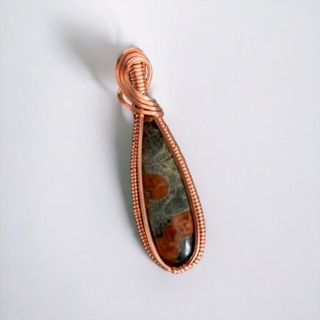
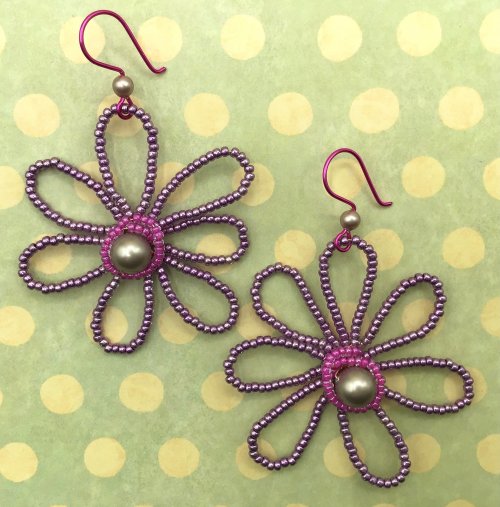
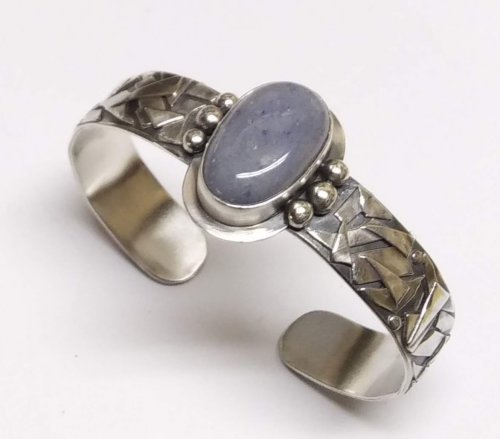

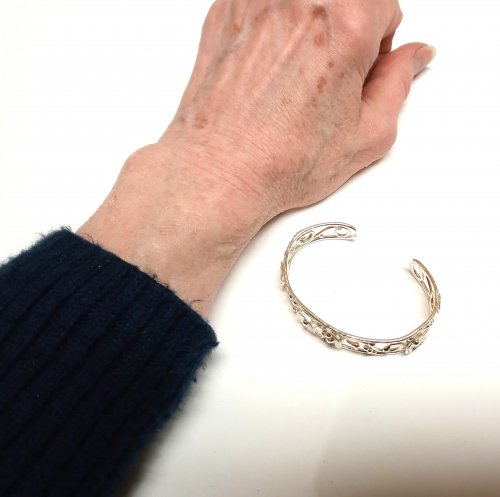
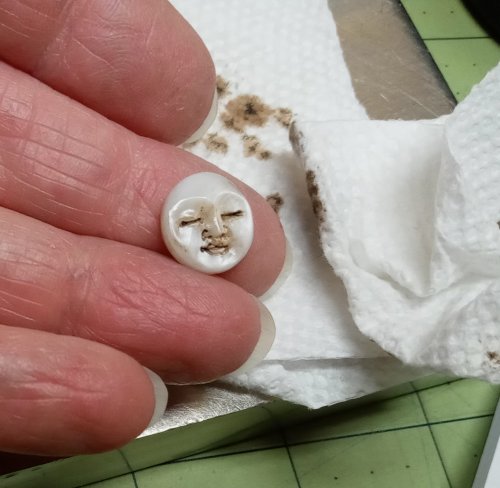
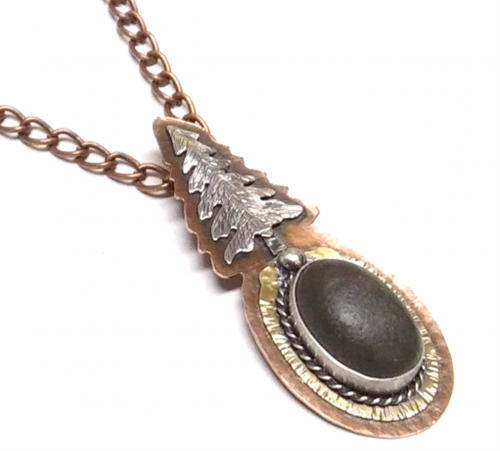
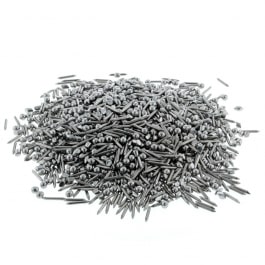

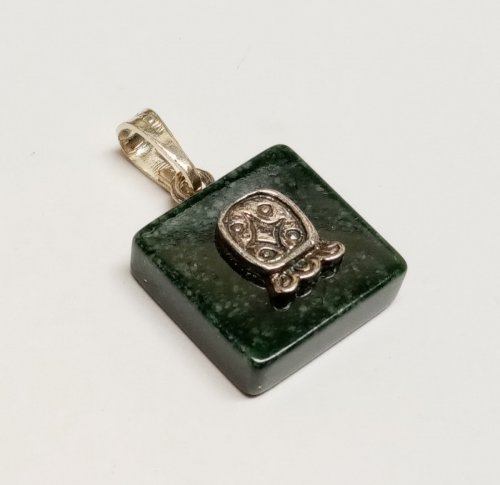





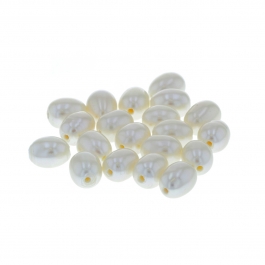 For the Love of Pearls
For the Love of Pearls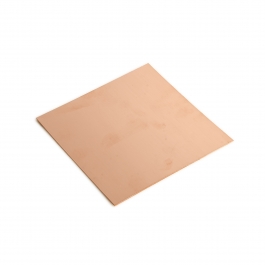 How to Clean Copper and Brass Wire and Sheet Metal
How to Clean Copper and Brass Wire and Sheet Metal
